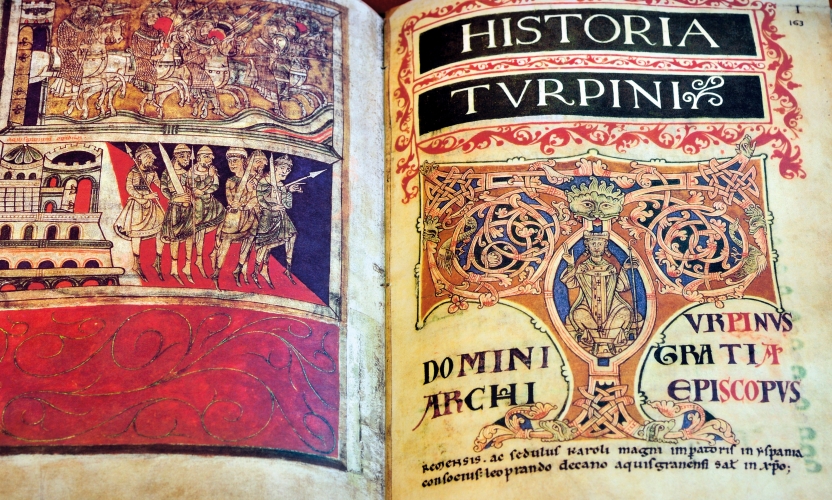The Codex Calixtinus is one of Spain’s most treasured cultural artefacts. This elaborately decorated medieval manuscript, dating back to 1135, is attributed to Aymeric Picaud, a French clergyman who journeyed to Santiago de Compostela. Picaud chronicled the history, legends, significant sites, and events of the pilgrimage trail while also providing practical advice for pilgrims embarking on this sacred journey.
The Structure and Legacy of the Codex Calixtinus
Divided into five volumes, the Codex Calixtinus covers a wide range of topics. It includes sermons, hymns, liturgical compositions, musical pieces, the miracles of St. James, and descriptions of holy sanctuaries. The manuscript also features homilies dedicated to Saint James, adorned with intricate illustrations.
The fifth volume is perhaps the most famous, often regarded as the world’s first travel guide. It provides a detailed description of the Camino Frances, the most popular route of the Camino de Santiago. This section outlines the towns and cities along the way, highlights important shrines, and offers practical tips for pilgrims. It even warns of potential dangers and points out shelters and hospices. Picaud’s vivid descriptions of the people he encountered along the route bring the medieval world to life, reminiscent of Chaucer’s Canterbury Tales.

The Theft and Recovery of the Codex Calixtinus
The Codex Calixtinus made headlines in recent history with a story that rivals any thriller. In 2011, this priceless manuscript was stolen from its reinforced glass case in Santiago de Compostela’s Cathedral. Only a handful of individuals had access to the case, leading to fears that the theft was orchestrated by professional art thieves working for a private collector.
A year later, the Codex Calixtinus was discovered in an unlikely place—the garage of a disgruntled ex-employee of the Cathedral. Alongside the manuscript, authorities uncovered over one million euros in cash and a trove of other ancient books stolen from the Cathedral archive.
The Codex Calixtinus Today
Today, facsimile copies of the Codex Calixtinus are displayed in museums worldwide, allowing people to appreciate its beauty and significance. However, the original manuscript remains securely housed in Santiago de Compostela, protected under strict security measures.
The Codex Calixtinus is an incredible bridge to the medieval past, offering matchless insight into the pilgrimage to Santiago and the lives of those who walked the Camino centuries ago.
Begin planning your very own adventure on the historic Camino de Santiago! Browse our full selection of Camino Walking Experiences.








